I tried out Copilot for CLI, released by GitHub Next.
This post is translated by DeepL, and corrected by me.
Before you try it 🚶
What is GitHub Copilot?
Copilot for CLI is an open source project created by GitHub that allows you to use GitHub Copilot in CLI. If you click Sign up for the waitlist in the previous link, you will be given the opportunity to use GitHub Copilot.
How long do I have to wait?
I don't remember exactly when I applied, but less than a month later I received the email below!

Installing the Copilot for CLI 🛠
Install
Global installation using npm.
npm install -g @githubnext/github-copilot-cli
Authentication
To use Copilot for CLI, you need to authenticate to GitHub Copilot. To authenticate, log in to GitHub Copilot and execute the command below.
github-copilot-cli auth
Follow the instructions to log in, as shown in the image below, and you'll be authenticated.
Trying out Copilot for CLI 🤖
Running Environment : WSL Ubuntu 22.04
First, check your commands with github-copilot-cli -h.
Usage: Copilot CLI [options] [command]
A CLI experience for letting GitHub Copilot help you on the command line.
Options:
-V, --version output the version number
-h, --help display help for command
Commands:
auth Retrieve and store a GitHub Access Token.
alias <shell path> Add convenient GitHub Copilot CLI aliases to your shell.
what-the-shell [options] <query...> Use GitHub Copilot to get shell commands from natural
language descriptions.
git-assist [options] <query...> Translate a natural language description of a git command to
an actual git command.
gh-assist [options] <query...> Convert plain english to GitHub CLI commands.
help [command] display help for command
Adding an alias
Using the alias command, you can add an alias to make the Copilot for CLI easier to use.
eval "$(github-copilot-cli alias -- "$0")"
1. what-the-shell (??)
With the what-the-shell command, you can write shell commands in natural language via GitHub Copilot.
Let's write a command that recursively prints only the desired directories (docs, blog, src) to a tree.
github-copilot-cli what-the-shell "directory tree"
Using the alias you added in Adding an alias above, you can use it like this
?? "directory tree"
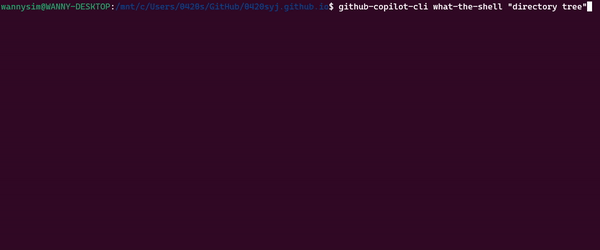
tree -R docs blog src
That's the command we wanted! 🎉
2. git-assist (git?)
You can write git commands in natural language.
Let's try to delete a branch.
git-assist "delete branch" # git? "delete branch"
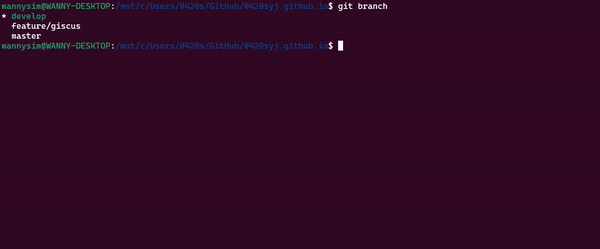
I deleted the feature/giscus branch that I forgot to delete 😅
3. gh-assist (gh?)
If you haven't used the GitHub CLI before, please install the GitHub CLI first. For OSes other than Windows, you can follow the official guide.
It combines the power of the GitHub CLI command and query interface with the ability to generate complex flags and jq expressions for you.
Let's create a new issue.
gh-assist "open new issue" # gh? open new issue
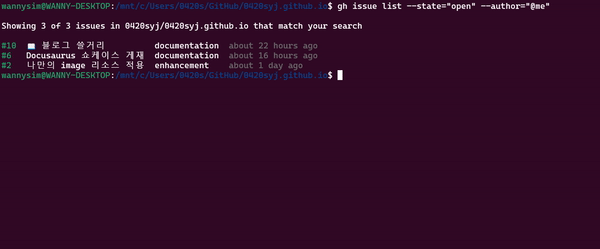
You've created a new issue!
Now let's create a new PR.
gh-assist "open new pull request" # gh? open new pull request
In addition, we'll add the following four instructions
- title "Copilot for CLI 체험기 🤖"
- content "Close #27"
- assign to me
- label documentation
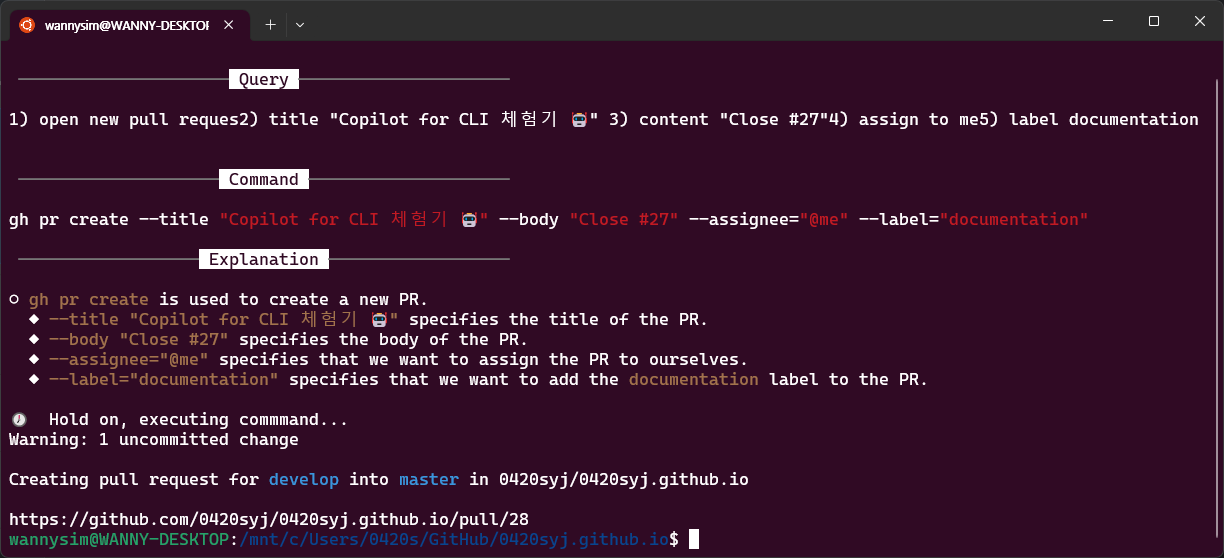
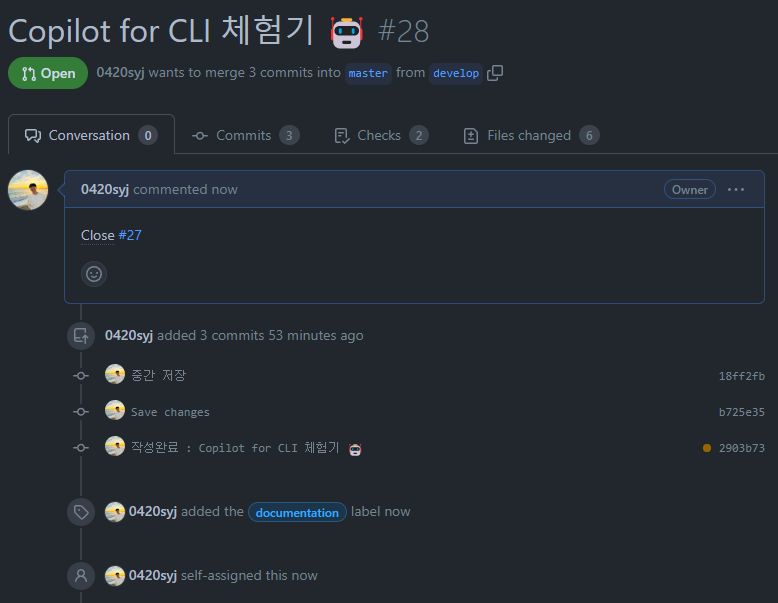
The github cli can now automatically generate PRs that you've been writing by hand!
Conclusion 🎉
First of all, I was surprised that my comprehension was better than I expected.
I've been used to the GUI environment, so there was something uncomfortable when using the CLI, but I think I can get used to using the CLI while using Copilot for CLI.
In particular, gh-assist seems to be helpful for using the GitHub CLI as well.